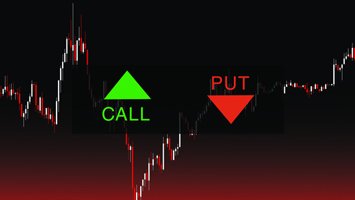We all know why everyone loves dividends.
After all, you're "getting paid" for doing nothing more than buying shares of a company. You're not actually hauling products to their stores and stocking their shelves. And it's not like you're making the decisions on how to run that company, either.
So that's a pretty sweet deal for investors.
But not for options traders.
In fact, dividends could be your worst nightmare when you've got options in your portfolio...
Unless you know this little trick...
Trading Options on Dividend Payers Is a Little Tricky
Before we get into the best way of trading options around dividends, I want to make sure you know the following key terms - they're absolutely crucial to your options trades:
- Declaration Date: This is the date a company's board of directors announces how much the next dividend will be.
- Record Date: This is the date by which an investor must own the company's stock to receive the dividend.
- Ex-Dividend Date: This is the most important date options traders need to know. It's the date after which investors who bought the stock can no longer receive the dividend (but the seller does). In order to receive the dividend, investors must own shares of the stock before this date.
- Note on Timing: Investors should buy the dividend-paying stock at least three days before the record date because stock trades take three days to settle. The ex-dividend date is usually set two business days prior to the record date; therefore, investors need to own the stock at least one day before the ex-dividend date to receive the dividend payout.
- Dividend Date: This is also called the "payout date" and is the actual date investors will receive the dividend - as either a cash payment or a reinvestment into their accounts.
 You'll want to keep these dates close to you when you've got options on dividend stocks in your portfolio - particularly in-the-money (ITM) options. A call is ITM when the strike price is lower than the current stock price. A put is ITM when the strike price is higher than the current stock price.
You'll want to keep these dates close to you when you've got options on dividend stocks in your portfolio - particularly in-the-money (ITM) options. A call is ITM when the strike price is lower than the current stock price. A put is ITM when the strike price is higher than the current stock price.
There's heightened risk in being assigned if you sold an ITM option or the option you sold goes ITM and the extrinsic value is less than the dividend amount. That's why it's extremely important to know the amount of the dividend (which you'll find out on the declaration date) and what the time value (also called "extrinsic value") of your option is. The time (or extrinsic) value is simply the option's price minus the amount by which it's ITM.
Here's the trick to calculating whether or not you're at risk...
To show you how you can determine whether or not your option trade's at risk of being assigned, let's look at an example of selling a call option on a dividend stock. In this scenario, the stock is trading at $27 and the call's strike price is $30. The premium (or price) of the sold option is $3.20, which means the extrinsic value is $0.20. The dividend amount is $.30.
This means that someone (or the market) can sell the option for $3.20 and take in $3.00 intrinsic (real) value and $0.20 of extrinsic (time) value (looking for profit of $3.20 less than what they paid for the option)...
Or -
[mmpazkzone name="in-story" network="9794" site="307044" id="137008" type="4"]
They can exercise the right to buy the stock at $30 (thereby giving up the $0.20 extrinsic value) and gladly take in the $0.30 dividend - making an extra $0.10 by doing so (that's $0.30 made on the dividend versus the $0.20 on the time value portion just trading the option).
 In this example, the risk of assignment is clear and present because the seller (or the market) has the right to come and buy the stock at that strike price ($30). That means the buyer would need to go and buy the stock at the current market price in order to give it to the seller at the strike price. And that's exactly why your risk of assignment is greatest on sold options that are or become ITM.
In this example, the risk of assignment is clear and present because the seller (or the market) has the right to come and buy the stock at that strike price ($30). That means the buyer would need to go and buy the stock at the current market price in order to give it to the seller at the strike price. And that's exactly why your risk of assignment is greatest on sold options that are or become ITM.
So, here are two things you can consider if an option on a dividend stock is - or will soon become - ITM:
- Close the trade. Keep in mind that you may end up taking a loss buying to close the option at a higher price than what it was sold for to open the trade... but you're saving yourself from having to go out and buy shares of the stock in the event that the option gets assigned.
- Close the trade and "roll out" it a further month out. This, too, could incur a small loss similarly to closing the trade outright. But by doing this, you'll bring in a premium that should offset that loss to a degree.
There's one more thing you'll need to know: What happens when the amount of the dividend is greater than the option's time extrinsic value.
Here's what I mean...
Say a January 45 call has a premium of $1.35 and $0.31 of that is ITM. This would leave $1.04 remaining in extrinsic value. Now, it's highly unlikely that someone will buy the call and exercise it when there's over $1.00 worth of extrinsic value remaining just to collect the $0.35 dividend. They'd lose on the extrinsic value alone.
This means that if and when a dividend is greater than the option's remaining extrinsic value, your risk is mitigated because it's highly unlikely that someone would want to pay for an option and exercise it - only to lose money on extrinsic value.
Options trading is the fastest growing moneymaker in the word right now. Thousands of new traders are hitting the market every hour, because options are the only way to control outsized portions of the world's best companies at reduced risk (and higher profit). Tom's teaching his Power Profit Trades readers how these powerful tools work, twice each week, for free. Click here to get his service - a world-class trading education - for yourself.
Follow Tom on Facebook and Twitter.
About the Author
Tom Gentile, options trading specialist for Money Map Press, is widely known as America's No. 1 Pattern Trader thanks to his nearly 30 years of experience spotting lucrative patterns in options trading. Tom has taught over 300,000 traders his option trading secrets in a variety of settings, including seminars and workshops. He's also a bestselling author of eight books and training courses.



